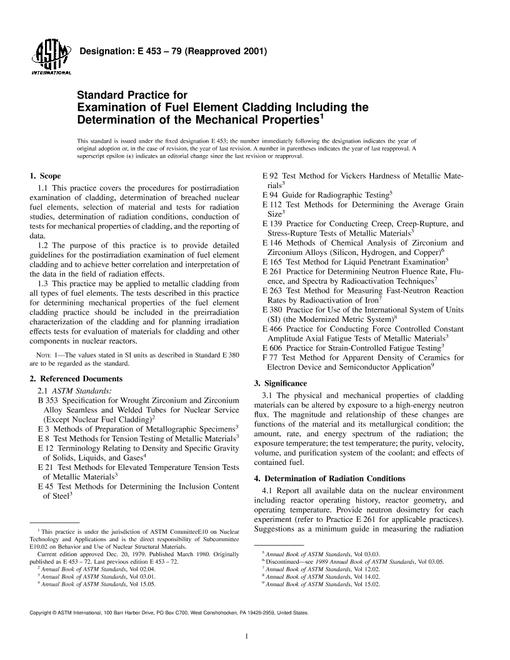1.1 This is a practice for using a cellulose triacetate (CTA) dosimetry system to measure absorbed dose in materials irradiated by photons or electrons in terms of absorbed dose to water. CTA is used as a routine dosimetry system or used for relative dose measurements (that is, non-traceable dose measurements).
1.2 The CTA dosimeter is classified as a type II dosimeter on the basis of the complex effect of influence quantities on its response (see ISO/ASTM Practice 52628).
1.3 This document is one of a set of standards that provides recommendations for properly implementing dosimetry in radiation processing, and describes a means of achieving compliance with the requirements of ISO/ASTM 52628 "Practice for Dosimetry in Radiation Processing" for a CTA dosimetry system. It is intended to be read in conjunction with ISO/ASTM 52628.
1.4 This practice covers the use of CTA dosimetry systems under the following conditions:
1.4.1 The absorbed dose range is 10 kGy to 300 kGy.
Note 1: The dosimeter film irradiated to doses exceeding 200 kGy becomes brittle to some degree and must be handled with care. This may limit the practical dose range depending on the type of testing and handling required.
1.4.2 The absorbed-dose rate range is 3 Gy/s to 4 ×1010 Gy·s (1).
1.4.3 The photon energy range is 0.1 to 50 MeV.
1.4.4 The electron energy range is 0.2 to 50 MeV.
1.5 The values stated in SI units are to be regarded as standard. No other units of measurement are included in this standard.
1.6 This standard does not purport to address all of the safety concerns, if any, associated with its use. It is the responsibility of the user of this standard to establish appropriate safety, health, and environmental practices and determine the applicability of regulatory limitations prior to use.
1.7 This international standard was developed in accordance with internationally recognized principles on standardization established in the Decision on Principles for the Development of International Standards, Guides and Recommendations issued by the World Trade Organization Technical Barriers to Trade (TBT) Committee.









